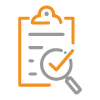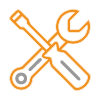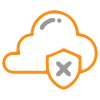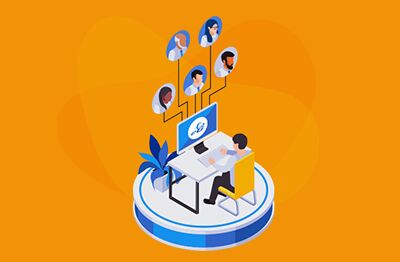 Multi-tenancy is an architecture in which a single instance of a software application and its underlying resources serves multiple customers, each customer is called a tenant. Multi-tenant architectures are the foundation of most SaaS offerings. Monitoring and troubleshooting multi-tenancy architectures can be challenging. A tenant can be an individual user, but more commonly, it is a group of users like a customer organization. that shares common access to and privileges within the application instance. Each tenant’s data is isolated from, and invisible to, the other tenants who share the multi-tenancy application instance, ensuring data security and privacy for all tenants.
Multi-tenancy is an architecture in which a single instance of a software application and its underlying resources serves multiple customers, each customer is called a tenant. Multi-tenant architectures are the foundation of most SaaS offerings. Monitoring and troubleshooting multi-tenancy architectures can be challenging. A tenant can be an individual user, but more commonly, it is a group of users like a customer organization. that shares common access to and privileges within the application instance. Each tenant’s data is isolated from, and invisible to, the other tenants who share the multi-tenancy application instance, ensuring data security and privacy for all tenants.
Confusingly “multi-tenant” is also sometimes used to refer to cloud hosting offerings. In multi-tenant hosting (often called “shared hosting”) a single physical server or even virtual machine (VM) is shared amongst multiple users or organizations. Multi-tenant hosting solutions are offered by Managed Service Providers (MSPs) and Cloud Service Providers (CSPs) typically as a lower-cost alternative to single-tenant or dedicated hosting solutions.
Multi-tenancy support is especially useful for MSPs who support small to medium customers. MSPs can amortize the cost of resources and management across several customers.
Is eG Enterprise a multi-tenant monitoring product?
Yes! No! It is up to you!
The core eG Enterprise product supports multi-tenancy, i.e., data from multiple tenant organizations can be stored in the same database and accessed via a single console by a super administrator whilst the tenants themselves only have access to their own data.
Users who deploy eG Enterprise themselves either on-prem or in a public cloud can choose whether to provide a dedicated instance of eG Enterprise or whether to operate a multi-tenanted deployment. This offers customers a wide range of options, for example we see:
- MSPs who offer shared hosted Citrix desktops implement multi-tenant eG Enterprise to monitor, bill and troubleshoot individual tenants.
- Larger organizations sometimes treat individual divisions or departments within their own business as separate tenants, sometimes for security reasons and sometimes to fit in with internal administrative processes such as cross-departmental billing.
In addition to self-deployment, we also offer a fully managed SaaS monitoring and observability platform, eG Enterprise Cloud. By default, this is a multi-tenanted service, in the same way that most organizations consume SaaS such as Salesforce, Google apps, Slack or HubSpot. To satisfy customers’ regional data compliance regulations we offer eG Enterprise cloud in a number of different public cloud regions on AWS (Amazon Web Service) or Microsoft Azure. Details on all the options to deploy eG Enterprise are covered, here: Deploying IT Monitoring – SaaS or On-Premises (eginnovations.com).
As a SaaS service offered on AWS, we chose to take part in Amazon’s Technical Review process, which reviews SaaS vendors’ products, their development and deployment processes and security architectures and achieved “Qualified Software” status, a badge designed to give customers confidence in SaaS products hosted on AWS.
Is eG Enterprise SaaS monitoring only offered in a multi-tenant mode?
No – if a customer needs to have a dedicated eG manager, for compliance reasons, or to deal with the scale of their environment, or because they require a higher grade of security, we support a dedicated SaaS configuration as well. The manager and database are sized to meet the needs of the customer. More details on this and all the options to deploy eG Enterprise are covered, here: Deploying IT Monitoring – SaaS or On-Premises (eginnovations.com).
Multi-tenant monitoring
![]() So, monitoring can be delivered by multi-tenancy SaaS, however that is quite different to a monitoring product designed to be leveraged by MSPs offering hosted services to multiple tenants/customers. eG Enterprise is one of the few monitoring and diagnostic products available that offer the tangible user interface and workflow features needed by MSPs. All components of eG Enterprise are available for multi-tenancy environments – synthetic monitoring, RUM (real User Monitoring), live and historical reporting and so on.
So, monitoring can be delivered by multi-tenancy SaaS, however that is quite different to a monitoring product designed to be leveraged by MSPs offering hosted services to multiple tenants/customers. eG Enterprise is one of the few monitoring and diagnostic products available that offer the tangible user interface and workflow features needed by MSPs. All components of eG Enterprise are available for multi-tenancy environments – synthetic monitoring, RUM (real User Monitoring), live and historical reporting and so on.
Mike Ferioli’s excellent blog covers several key features provided by eG Enterprise for MSPs managing multiple tenants, see: Multi-Tenant MSP Monitoring | eG Innovations. In this article he covers details of the following features included within eG Enterprise for MSP environments:
- Secure and segregated views for tenants
- Providing MSPs with at-a-glance unified views as well as tenant-specific drilldowns, and beyond this, eG Enterprise also offers live and historical reporting per tenant that can be exposed to tenants as needed
- Support for multiple administrators in an organization
- Tenant self-provisioning
- Providing tenants with certain specified administration rights
- Support for multiple private IP networks
- Flexibility with license assignment and reporting
- Auto deletion of tenants
- Flexible, pay-per-use billing model (monthly and by usage billing, and tracking, allows MSPs to only pay for their usage of eG Enterprise on timescales that suit their cashflow model and charge their customers accordingly)
- White labeling the monitoring service and displaying the MSP’s brand
In addition to Mike’s list, I find many MSPs find certain other features essential such as:
 Compliance audit trails and reports. MSPs using eG Enterprise can rely on a full audit history of access and actions, this is especially important where tenants take on L1/L2 support themselves and support can be undertaken by different organizations. For details, please see: Control and Audit Remote Control Actions for Security and Auditing Capabilities in IT Monitoring Tools.
Compliance audit trails and reports. MSPs using eG Enterprise can rely on a full audit history of access and actions, this is especially important where tenants take on L1/L2 support themselves and support can be undertaken by different organizations. For details, please see: Control and Audit Remote Control Actions for Security and Auditing Capabilities in IT Monitoring Tools. Multiple ITSM integrations. eG Enterprise allows the MSP to offer help desk ticketing in the systems of choice of the tenant / customer whether that is ServiceNow, PagerDuty, MS teams, or others. Details are given in: Integration with multiple ITSM tools at the same time (eginnovations.com).
Multiple ITSM integrations. eG Enterprise allows the MSP to offer help desk ticketing in the systems of choice of the tenant / customer whether that is ServiceNow, PagerDuty, MS teams, or others. Details are given in: Integration with multiple ITSM tools at the same time (eginnovations.com). Maintenance mode. This is another feature particularly helpful when help desk support services span tenants and MSP organizations. Either party may wish to make changes or undertake tasks that could trigger alerts to the other party. Maintenance mode is designed to temporarily suspend alerting on specified components when routine maintenance is being performed. See: Managing Monitoring and Alerting during IT Maintenance
Maintenance mode. This is another feature particularly helpful when help desk support services span tenants and MSP organizations. Either party may wish to make changes or undertake tasks that could trigger alerts to the other party. Maintenance mode is designed to temporarily suspend alerting on specified components when routine maintenance is being performed. See: Managing Monitoring and Alerting during IT Maintenance  Cloud outage resilience. Many MSPs offer services hosted on public clouds such as Microsoft Azure or Amazon AWS. In the event of an outage their customers invariably turn to the MSP first, so it is essential for MSPs to have full visibility on outages and monitoring that itself is not impacted by cloud outages. More on this is covered in: How to Protect your IT Ops from Cloud Outages.
Cloud outage resilience. Many MSPs offer services hosted on public clouds such as Microsoft Azure or Amazon AWS. In the event of an outage their customers invariably turn to the MSP first, so it is essential for MSPs to have full visibility on outages and monitoring that itself is not impacted by cloud outages. More on this is covered in: How to Protect your IT Ops from Cloud Outages. RBAC (Role Based Access Control). A good RBAC implementation is essential to support multi-tenant monitoring. Details of eG Enterprise’s implementation are covered in: Role-Based Access Control in eG Enterprise.
RBAC (Role Based Access Control). A good RBAC implementation is essential to support multi-tenant monitoring. Details of eG Enterprise’s implementation are covered in: Role-Based Access Control in eG Enterprise.
There are a number of features in eG Enterprise designed not only for our MSP customers but for larger enterprise customers who operate in different countries and time zones. For larger MSPs it is often important to be able to:
- support customers in different geographies. Tenants will want to see data, metrics, and reports in their own time zone. MSPs may be supporting many tenants in many different time zones and need a straightforward way to switch to the time zone of a particular tenant during support calls and help desk interactions. See: Personalized Time Zones for Users for information on how eG Enterprise supports common MSP workflows.
- have monitoring tools with multi-cloud and hybrid cloud support. The ability to mix and match the best offerings for low latency, data compliance and cost efficiency is essential for organizations to remain competitive and deliver optimal user experience. Details of monitoring features needed for multi-cloud and hybrid environments are covered in a whitepaper, see: White Paper | Top 10 Requirements for Performance Monitoring of Cloud Applications and Infrastructures.
Traditional RMM (Remote Monitoring & Management) tools do not offer modern MSPs sufficient features to support the SLA (Service Level Agreement) expectations of customers, to find out what a fully featured MSP observability platform offers compared to RMM tools, please see the solution brief: Modern MSP Tools vs. RMM Tools.
Architected for multi-tenancy MSPs means suitable for larger Enterprise
![]() Retrospectively implementing multi-tenancy is hard within monitoring products and this means solutions that were not originally architected with MSPs in mind can be fiddly and clunky. Because eG Enterprise was architected to accommodate MSP use cases, there is no fiddly domain management configuration and deploying a new tenant is easy via a simple to use GUI with tenant self-service provisioning available.
Retrospectively implementing multi-tenancy is hard within monitoring products and this means solutions that were not originally architected with MSPs in mind can be fiddly and clunky. Because eG Enterprise was architected to accommodate MSP use cases, there is no fiddly domain management configuration and deploying a new tenant is easy via a simple to use GUI with tenant self-service provisioning available.
Many larger enterprises operate their IT systems in a comparable manner to MSPs, often for security reasons. Individual business units may be siloed and operate as tenants within the overall organization. This can happen on a per country basis or even per department basis.
Organizations that operate like MSPs often require software tools with features dedicated to their use cases, we’ve put together a checklist of questions covering more than monitoring tools to help MSPs evaluate software tools as fit for purpose in their environments, please see: MSP Remote Monitoring & Management Tools (eginnovations.com) – this.
What type of services do multi-tenanted service providers using eG Enterprise monitoring offer?
We see a wide range of services delivered by our customers. The most common services offered, include:
- Remote Monitoring & Management (RMM)
- Hosted Applications & Digital Workspaces
- Help Desk
- Application Availability Testing as a Service
- Desktop as a Service (DaaS)
- Monitoring as a Service (MaaS)
- Infrastructure as a Service (IaaS)
- Software as a Service (SaaS) hosting
- Troubleshooting and Optimization Consultancy
You can read more about some of our MSP partners and their business models, here: Managed Services | eG Enterprise Monitoring for MSPs.
Partner solution – Spadafy
Read about how healthcare MSP and professional services provider Spadafy offer VDI troubleshooting and optimization services using eG Enterprise as a one-off service or on monthly subscription leveraging eG Enterprise’s MSP friendly licensing. See: https://spadafy.com/eg/
eG Enterprise is an Observability solution for Modern IT. Monitor digital workspaces,
web applications, SaaS services, cloud and containers from a single pane of glass.
eG Enterprise is an Observability solution for Modern IT. Monitor digital workspaces,
web applications, SaaS services, cloud and containers from a single pane of glass.
Other information on multi-tenant architectures and multi-tenancy
- What is multi-tenancy? | Definition from TechTarget
- Tech Entrepreneur’s Guide to Multi-tenant Architecture (netsolutions.com)
- SaaS application such as Salesforce are offered in a comparable way to our managed eG Enterprise Cloud offerings, most SaaS providers offer detailed descriptions of their multi-tenancy architectures, for example Salesforce, here: Platform Multitenant Architecture | Salesforce Architects
- Security practices in AWS multi-tenant SaaS environments | AWS Security Blog (amazon.com)


